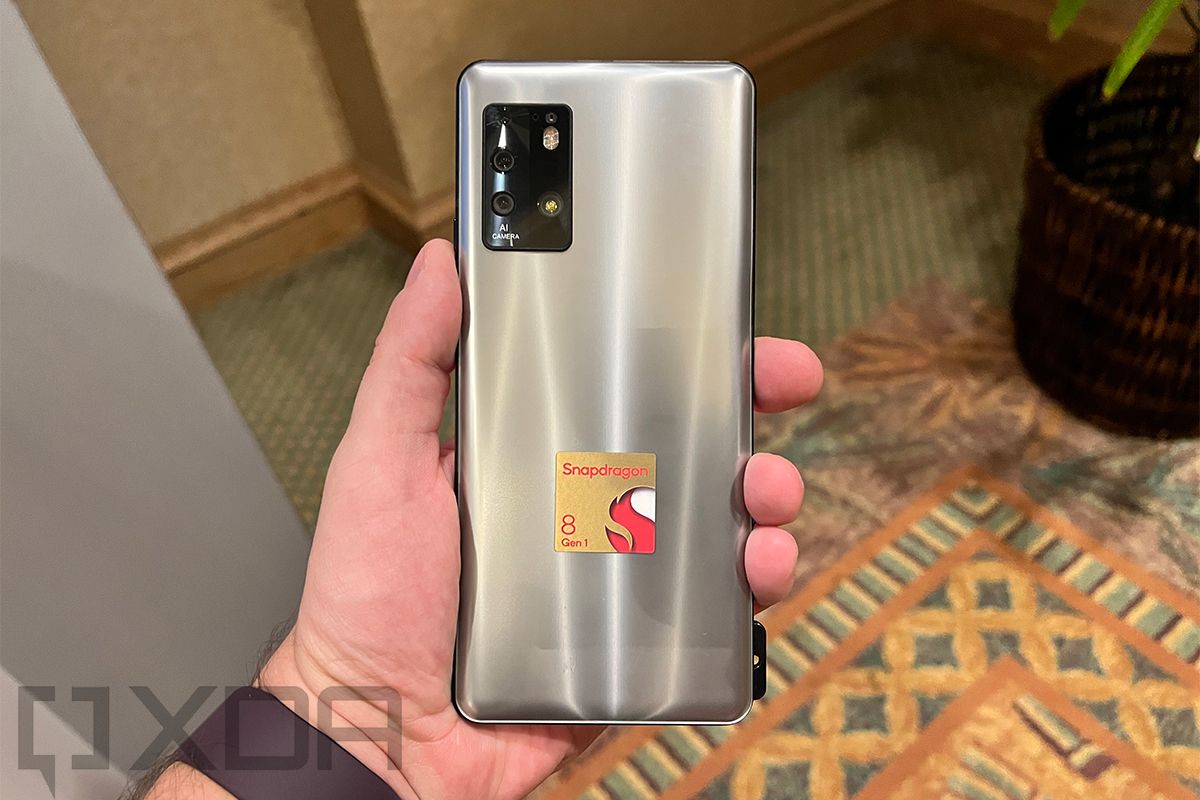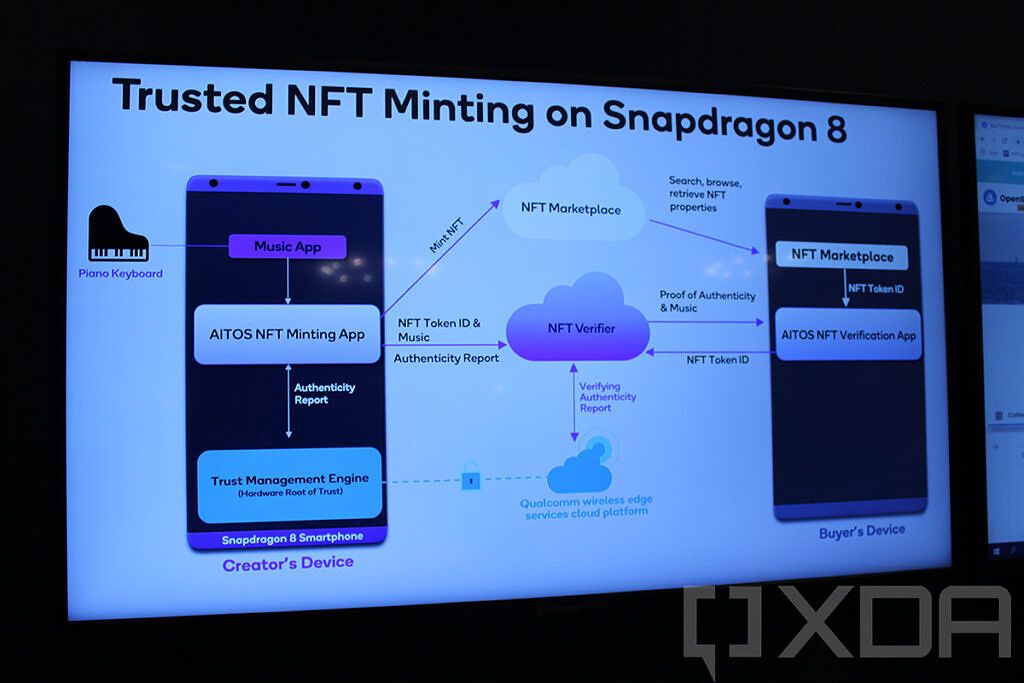It's Qualcomm's Snapdragon Technology Summit, and just as it does every year, the company announced its latest flagship mobile processor. It changed up its branding this year after maxing out with the Snapdragon 888 last year. Since 8 means premium, we're getting the Snapdragon 8 Gen 1. It follows in line with the branding we've already seen from Qualcomm's laptop chips with the Snapdragon 8cx, 7c, and so on.
This year, the event is back to being held in person, and Qualcomm flew a bunch of journalists, analysts, and Snapdragon Insiders out to the Big Island of Hawaii. The format is a bit different this time though. In previous years, the day opened with a keynote and demos followed. This time around, we were invited to try out the demos before the keynote.
There were six different stations that were used to show off some of the chip's power, ranging from minting NFTs to new camera features.
Disclaimer: Qualcomm sponsored my trip to Kona, Hawaii, to attend the Snapdragon Tech Summit. The company paid for my flight and hotel. However, they did not have any input regarding the content of this article.
Mint Trusted NFT
In this demo, an NFT was created by playing some notes on a keyboard, and then it was uploaded. With the Snapdragon 8 Gen 1, you can get secure boot, so it can be validated that the NFT is unique. Without secure boot, you can still mint an NFT, but you can't validate it as being a trusted NFT.
Cellular connection security
Next up is cellular connection security, and the idea is to make sure that you're connected to a secure cellular network. Your phone is always looking for the best cell tower to use, so at any given moment, it could connect to something that's infected with malware. This lets you know if you're connected to a trusted network.
In the demo, they actually spoofed a text message from Bank of America, which included a link to a site that would try to get your credentials and also install a fake Bank of America APK. But it also showed that you can be alerted if you're not on the trusted cellular network, and it can block those kinds of messages.
Panoramic view technology
This one is pretty cool. It's not just a feature of the Snapdragon 8 Gen 1 ISP; Qualcomm actually put together the camera module for this. It's a 140-degree panoramic lens, which is wider than the 120 degrees we see from the widest angle cameras. It lets you take panoramic photos in one shot, so there's no more trying to stitch together separate images in sometimes-awkward places.
It saves as a 16MP image, but it records video too. Unfortunately, that wasn't a feature in the demo unit, but it's coming. I also asked about whether it could still use those wide-angle images to stitch together a really wide panorama photo, but there's no word on that just yet.
This was one of my favorite demos, probably just because I like camera features. It's also something that I could picture myself using in real life. A lot of the features that get demoed seem to improve the user experience in theory. They show features that can be applied to real-world applications, rather than actual real-world applications.
ArcSoft Video Bokeh
I don't have to talk too much about video bokeh, because Qualcomm has been demoing it for a few years now. The bottom line is that it's getting better. Using the AI Engine and depth information, it produces a more natural background blur effect. There are other big camera features coming with the new ISP, such as HDR support when capturing 8K video, but there was no demo of that. We're going to be getting more camera demos though.
Hugging Face Question Answering
Hugging Face is a company that specializes in Natural Language Processing (NLP), and this feature is pretty cool. However, it's one of those things that's more of a feature that can be used in the real world. Using AI, you can ask natural-language questions about the text visible on the screen. You can see how much faster it is when using the AI Engine versus when it's not.
Like all of these AI features, my first question was how I would use this in real life. For example, if you have a big manual or a textbook that you want to search with a natural-language query, you can use it for that. If you have a manual for your car, you can ask how to change the brakes. If you've got hundreds of notifications, you can easily query those. Admittedly, this is one of those things that works in theory, and we'll need to see if it's actually implemented into something useful. For now, it's just something that shows what the Snapdragon 8 Gen 1 can do.
Real-time action recognition
The focus of this feature is once again AI. It's basically adding frames to improve video or turn regular video into slow-motion video. For example, if you have a standard video at 30fps, you can't really slow it down. Ideally, you want a minimum of 120fps for slow motion, but 240fps is way better. If you slow down 30fps video, it's just choppy. With this feature, it adds the missing frames so that the slow-motion video is smooth.
Like I said earlier, most of these features were just shown as proof of concepts. After all, device manufacturers have to choose which features to include in their software and hardware, and even then, it's up to them to figure out how these things can be practical. Other than some camera features, most demos end with, "Now imagine if..."
It's all pretty cool though. Qualcomm is the leader in mobile processors for Android smartphones, and that doesn't appear to be changing with the Snapdragon 8 Gen 1.


